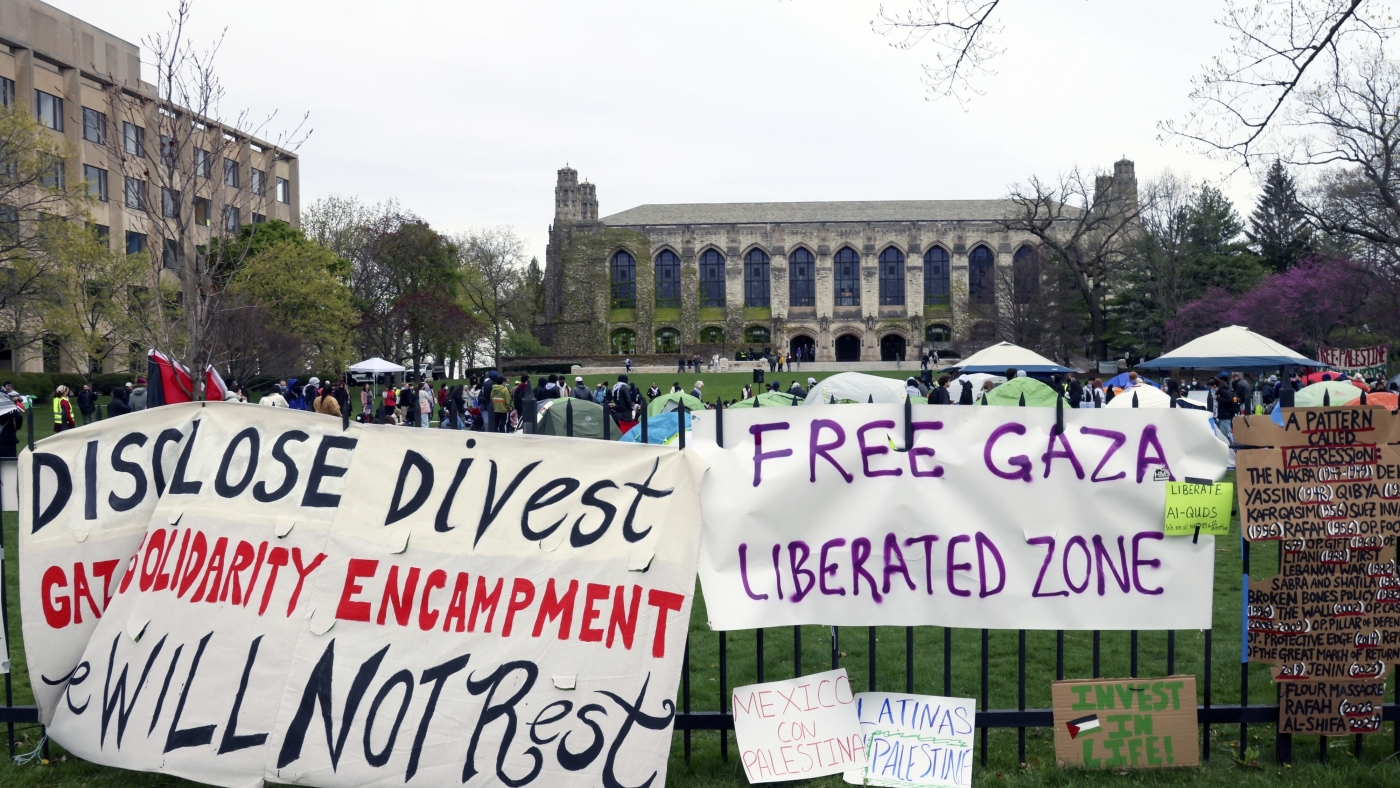News
Sudiksha Konanki’s disappearance echoes Natalee Holloway case. Is it affecting travel?

Sudiksha Konanki’s puzzling disappearance comes as thousands of students prepare to embark on spring break trips of their own.
College student Sudiksha Konanki disappeared on spring break trip
The search continues for Sudiksha Konanki, a 20-year-old student who disappeared from a Punta Cana resort.
A night out in the Caribbean. Blurry surveillance footage. A mysterious disappearance. Worried parents demanding answers. Sound familiar?
University of Pittsburgh student Sudiksha Konanki vanished from a beach in the Dominican Republic last Thursday while on spring break with five friends. Authorities say she was last seen with a man whom she is believed to have met in the resort town of Punta Cana.
Early details of her case are eerily similar to the disappearance of another American student almost 20 years ago. On May 30, 2005, Natalee Holloway did not return to her hotel room after a night out drinking with friends in Aruba on her high school graduation trip. Her murder would go unsolved for more than a decade.
The questions surrounding Holloway’s final moments captured the attention of the entire country for days, weeks and years after her death – dominating the 24/7 news cycle, inspiring dozens of books and documentaries, and helping to germinate America’s obsession with true crime.
Holloway’s mom, Beth Holloway, told Fox News that she hoped the U.S. Embassy in the Dominican Republic would be able to help Konanki’s family find answers.
“The family is so fortunate to have an American embassy there to work with. I did not have that in Aruba,” Holloway said. “Surely they are checking cameras from hotel, gas stations, traffic lights, store fronts and wherever they had dinner, any casinos they visited, the beach areas.”
Echoes of Natalee Holloway
Holloway’s case struck fear in many young Americans, particularly women, and their parents about traveling abroad. The idea that tragedy could unfold in a place that looked like paradise was “unsettling” to an American public that associated tourism with safety said Amy Shlosberg, a professor of criminology at Fairleigh Dickinson University and host of the podcast Women & Crime.
Holloway was traveling with a large group of students on a high school graduation trip when she died. On their last night in Aruba − May 29, 2005 − she and a few friends went to a local bar to get drinks. Holloway was seen leaving with a group of men, including a Dutch teenager named Joran van der Sloot.
Van der Sloot initially denied any wrongdoing but later admitted to murdering Holloway in a confession that was made public in 2023. He said he threw a cinder block at her after she rejected his sexual advances while the two were alone on the beach. Her body was never found.
Authorities investigating Konanki’s disappearance said she was last seen on Thursday on a beach with her friends. Authorities have said surveillance footage shows five women and one man leaving the beach at about 6.am. but Konanki allegedly stayed behind with a man named Joshua Riibe who she met on the island. Surveillance video showed him leaving the beach area hours later without her.
Local authorities are not labeling Konanki’s case as a criminal investigation. Her father has asked investigators to consider multiple options for her disappearance outside of drowning, including kidnapping.
Konanki’s story, Shlosberg said, has the potential to “reawaken” many of the traveling anxieties that Holloway’s disappearance triggered in a new generation of young people.
“Even though something like this happened 20 years ago, it’s not a thing of the past, these things are still happening,” Shlosberg said.
Are parents, students worried about spring break travel?
Search #PuntaCana and #SpringBreak on TikTok, and you’ll find dozens of videos of giddy college students packing for their trip and waiting with friends to board their flights. Some expressed hesitancy about travelin because of Konanki’s disappearance. On Facebook, a parent asked whether travel to the Dominican Republic would still be safe for her daughter this week.
Jake Jacobsen, vice president of STS Travel, an agency that books between 5,000 and 10,000 spring break trips for students, told USA TODAY he has fielded calls from nervous parents but “very few” students have cancelled their travel plans in the days since Konanki disappeared.
His advice to them: weigh the facts and make the decision that feels most comfortable.
“Right now, there’s 1000s of college students down there having a good time. That’s pretty much what we tell them,” Jacobsen said.
Jacobsen said the destination of the Dominican Republic should be not be tarnished by the incident.
“We’re all very concerned, and we all want to know what’s going on, and we’d like to know sooner rather than later. Our hearts go out to the family,” Jacobsen said. “As far as people wanting to travel, all we can do is update them on the current information.”
Contributing: N’dea Yancey-Bragg, John Bacon and Thao Nguyen, USA TODAY

News
An independent effort says AI is the secret to topple two-party power in Congress

The Independent Center is using AI to identify Congressional districts where independent candidates could win over the Democrat or Republican candidate. Its goal is to elect at least a handful of independents to disrupt the two-party system on Capitol Hill.
Glenn Harvey for NPR
hide caption
toggle caption
Glenn Harvey for NPR
The rise of AI assistants is rewriting the rhythms of everyday life: people are feeding their blood test results into chatbots, turning to ChatGPT for advice on their love lives and leaning on AI for everything from planning trips to finishing homework assignments.
Now, one organization suggests artificial intelligence can go beyond making daily life more convenient. It says it’s the key to reshaping American politics.
“Without AI, what we’re trying to do would be impossible,” explained Adam Brandon, a senior advisor at the Independent Center, a nonprofit that studies and engages with independent voters.
The goal is to elect a handful of independent candidates to the House of Representatives in 2026, using AI to identify districts where independents could succeed and uncover diamond in the rough candidates.
In a time when control of the House balances on a knife’s edge, winning even a handful of seats could deny either party from getting a majority and upend the way the House currently operates.
It’s a bold proposition in a system that hasn’t seen a new independent candidate win a House seat in 35 years.
But data shows a rise in moderate and independent voters. Gallup found 43% of Americans — a record high — claiming the independent label in 2024. Exit polls that year showed 34 percent of voters identified as independent, up from 26 percent in 2020.
“There’s a huge chunk of people who for different reasons can’t stomach either of the two parties,” said David Barker, a professor of government at American University. “It’s the first time in a long time where a plurality of Americans are now identifying as independents, and so that does seem to signal a pretty important shift.”
Brandon said that shift is what makes the time right to disrupt the status quo.
“It’s like Uber and taxis. You had a system with an obvious flaw, that had entrenched operators and took a radical change to go completely around it,” he told NPR. “And that’s what we’re feeling now. People are so stuck into ‘Republican’ and ‘Democrat’ and we’re like, well, there’s something else.”
‘We’re political fighters’
Trying to throw a wrench into the stranglehold of a two-party system is an uphill battle, pushing against political orthodoxy and plenty of skeptics.
But the Independent Center’s strategists are a far cry from political newbies.
“We’re political fighters,” said Brandon, who served as President of FreedomWorks, the conservative grassroots group that helped turn Tea Party activists into a political force before closing its doors last year. “We have built a team of people that know how to do this. We’re not going to be pushovers.”
Brandon works closely with Brett Loyd, who runs The Bullfinch Group, the nonpartisan polling and data firm overseeing the polling and research at the Independent Center. He previously worked on President Trump’s polling team, when the president was a candidate.
“I’m a statistician. I kind of joke that I worked for the RNC because they offered me a job before the DNC,” he said with a smile. “My job is numbers and sentiment and game theory. It’s not necessarily Republican or Democratic.”
He makes it clear the goal of their work isn’t to erase partisanship altogether.
“This isn’t going to work everywhere. It’s going to work in very specific areas,” Loyd said. “If you live in a hyper-Republican or hyper-Democratic district, you should have a Democrat or Republican representing you.”
But with the help of AI, he’s identified 40 seats that don’t fit that mold, where he said independents can make inroads with voters fed up with both parties. The Independent Center plans to have about ten candidates in place by the spring, with the goal of winning at least half of the races.
Brandon predicts those wins could prompt moderate partisans in the House to switch affiliations.
“I had one Republican [member] tell me in his office, ‘I’m too chicken**** to do this right now,’” he recalled. “‘But if you can do this, I will join you.’”
From mining Reddit to matching on LinkedIn
Their proprietary AI tool created by an outside partner has been years in the making.
While focus groups and polling have long driven understanding of American sentiments, AI can monitor what people are talking about in real time.
“Polling is a snapshot in time — a Tuesday at 11 when you got the phone call or you were at the focus group, this is how you felt, but then you went home and your views changed. We can watch that,” Brandon said.
They’re using AI to understand core issues and concerns of voters, and to hunt for districts ripe for an independent candidate to swoop in.
“A district that’s 50% Republican and 50% Democratic that keeps flip flopping because of who showed up on a given night, is that something that is truly independent versus a district in Arizona where a plurality is independent but they’re plugging their nose and voting?” Loyd explained. “We’re looking at voter participation rates. What districts have really low turnout because those people aren’t excited to go to the ballot box.”
He’s also looking at districts with younger voters, who he said embrace the independent message.
“When I say Gen Z and millennials, people keep rolling their eyes and they’re like, ‘the kids,’” he said. “Well, those kids are going to be more than half the electorate in the next presidential election.”
From there, the next step is taking the data and finding what the dream candidate looks like.
The Independent Center is recruiting candidates both from people who reach out to the organization directly and with the help of AI.
They can even run their data through LinkedIn to identify potential candidates with certain interests and career and volunteer history.
“Usually they’re not self-promoting, but their actions leave a footprint,” Loyd said, giving the example of someone volunteering at an event covered by the local paper. “We ask our AI to find that footprint.”
The AI also informs where a candidate is best placed to win.
Brandon points to one instance where a candidate was poised to run in their home district. The AI showed the district next door is a better bet.
“30 minutes way, perfect fit,” he said. “And that’s what [that person’s] going to do, because we found they matched up perfectly.”
‘What’s wrong with spoiling something people don’t like?’
One criticism Brandon and Loyd acknowledge they hear often is the idea of ‘spoilers’ — non-winning candidates whose presence on the ballot affects which candidate wins.
“It’s a partisan, archaic line,” Loyd said. “What’s wrong with spoiling something people don’t like?”
He said the people criticizing independents getting into races as spoilers have an entrenched interest in the current system.
“The Republican and Democratic establishments still live in a world that’s binary. It’s Coke or Pepsi, it’s Ford or Chevy, it’s MSNBC or Fox News,” he said. “That works for people that watch MSNBC and Fox News. Everybody else? We don’t live in that binary system anymore.”
Brandon said the only thing to do is lean in.
“We’re going to embrace the spoiler because what we’re spoiling is a pretty corrupt system.”
News
Venezuela calls Trump’s call to close airspace a ‘colonialist threat’

President Donald Trump speaks to reporters after speaking to troops via video from his Mar-a-Lago estate on Thanksgiving, Thursday, Nov. 27, 2025, in Palm Beach, Fla.
Alex Brandon/AP
hide caption
toggle caption
Alex Brandon/AP
The Venezuelan government has condemned President Trump’s statement on Saturday calling for the airspace above Venezuela to be closed.
In a Truth Social post, Trump said “To all Airlines, Pilots, Drug Dealers, and Human Traffickers, please consider THE AIRSPACE ABOVE AND SURROUNDING VENEZUELA TO BE CLOSED IN ITS ENTIRETY.”
The Venezuelan government responded with a statement saying Trump’s comments violate international law and are a “colonialist threat” to the country’s sovereignty.
“No authority outside the Venezuelan institutional framework has the power to interfere with, block, or condition the use of international airspace,” the statement said.

As of Sunday afternoon, Flightradar24 shows planes continuing to fly in Venezuelan airspace.
This comes a day after the Senate and House Armed Services committees said they would look into the Pentagon after The Washington Post reported that Defense Secretary Pete Hegseth gave an order to kill all crew members aboard a boat suspected of smuggling drugs in the Caribbean in September. NPR has confirmed the Washington Post’s reporting.
The military has carried out at least 21 strikes and killed at least 82 people on alleged drug boats as part of “Operation Southern Spear,” a campaign that the Trump administration says is aimed at tackling drug-trafficking.
Venezuela said in its statement that “such statements represent an explicit use of force, which is prohibited by Article 2, paragraph 4 of the U.N. Charter of the United Nations.”
Democrats have also strongly criticized the administration’s strategy, saying the military didn’t have enough evidence that the boats were carrying drugs before conducting the strikes. Senator Chris Van Hollen, a Democrat from Maryland, told ABC’S This Week on Sunday it’s possible the military’s actions could be considered a “war crime,” and that Hegseth should be held accountable.
“They’ve never presented the public with the information they’ve got here,” Van Hollen said, “But it could be worse than that, right? If that theory is wrong, then it’s plain murder.”
However, Republican Senator Eric Schmitt, a member of the Armed Services Committee, said on Sunday Morning Futures on Fox News that Trump is acting “well within his Article 2 powers” when it comes to curbing drug smuggling by striking the boats.
“I think it’s a two part strategy,” Schmitt said. “One is to get rid of the precursors that are coming from China, and then take out the cartels that are distributing this and bringing it to the United States of America.”
Both Democrats and Republicans in Congress have expressed frustration at Trump’s stance on Venezuela, and that the Trump administration conducted the strikes without legislative approval.
“Trump’s reckless actions towards Venezuela are pushing America closer and closer to another costly foreign war,” Senate Minority Leader Chuck Schumer posted on X on Saturday, hours after Trump’s post about Venezuelan airspace.
Republican Rep. Marjorie Taylor Greene, a former Trump ally, also posted on Saturday, saying “Reminder, Congress has the sole power to declare war.”
News
Northwestern settles with Trump administration in $75M deal to regain federal funding

Signs are displayed outside a tent encampment at Northwestern University on April 26, 2024, in Evanston, Ill.
Teresa Crawford/AP
hide caption
toggle caption
Teresa Crawford/AP
Northwestern University has agreed to a $75 million payout to the Trump administration to settle a discrimination investigation into the school and to restore federal funding that had been frozen throughout the inquest, the Justice Department announced on Friday.
“Today’s settlement marks another victory in the Trump Administration’s fight to ensure that American educational institutions protect Jewish students and put merit first,” Attorney General Pam Bondi said in a statement.
“Institutions that accept federal funds are obligated to follow civil rights law — we are grateful to Northwestern for negotiating this historic deal.”
Northwestern is one of several schools ensnared in President Trump’s campaign against university policies he has decried as “woke.”
Specifically, the Illinois private school was one of 60 colleges the Education Department accused of shirking their obligations to “protect Jewish students on campus, including uninterrupted access to campus facilities and educational opportunities” amid heated university protests against the war in Gaza.
In April, the White House announced it was withholding some $790 million in federal funds from Northwestern while the government investigated the claims. University interim President Henry Bienen said in a statement to university personnel that “the payment is not an admission of guilt,” according to the school newspaper The Daily Northwestern.
Earlier this month, Cornell reached a deal requiring the university to pay $60 million to unfreeze $250 million withheld by the Trump administration over alleged civil rights violations. The private Ivy League university said the settlement did not come “at the cost of compromising our values or independence.”
Per the agreement, Northwestern will pay out the $75 million over time through 2028 and “shall maintain clear policies and procedures relating to demonstrations, protests, displays, and other expressive activities, as well as implement mandatory antisemitism training for all students, faculty, and staff,” according to the DOJ.
Education Secretary Linda McMahon called the settlement “a huge win” for higher education.
“The deal cements policy changes that ‘will protect students and other members of the campus from harassment and discrimination,’ and it recommits the school to merit-based hiring and admissions,” she said in a statement.
“The reforms reflect bold leadership at Northwestern, and they are a roadmap for institutional leaders around the country that will help rebuild public trust in our colleges and universities,” she added.
An explainer posted to the university’s website said that the school decided to negotiate an agreement rather than take a chance in court, calling the cost of a legal fight “too high and the risks too grave.”
Northwestern’s Bienen said in a video statement that the school would retain its academic freedom and autonomy from the federal government.
“There were several red lines that I, the board of Trustees and university leadership refused to cross. I would not have signed anything that would have given the federal government any say in who we hire, what they teach, who we admit or what they study,” Bienen said.
“Put simply, Northwestern runs Northwestern.”
-

 Science1 week ago
Science1 week agoWashington state resident dies of new H5N5 form of bird flu
-

 Business6 days ago
Business6 days agoStruggling Six Flags names new CEO. What does that mean for Knott’s and Magic Mountain?
-

 Politics4 days ago
Politics4 days agoRep. Swalwell’s suit alleges abuse of power, adds to scrutiny of Trump official’s mortgage probes
-

 Ohio5 days ago
Ohio5 days agoSnow set to surge across Northeast Ohio, threatening Thanksgiving travel
-

 Southeast1 week ago
Southeast1 week agoAlabama teacher arrested, fired after alleged beating of son captured on camera
-

 Technology4 days ago
Technology4 days agoNew scam sends fake Microsoft 365 login pages
-

 News4 days ago
News4 days ago2 National Guard members wounded in ‘targeted’ attack in D.C., authorities say
-

 World4 days ago
World4 days agoTrump yanks G20 invitation from South Africa over false genocide claims





















